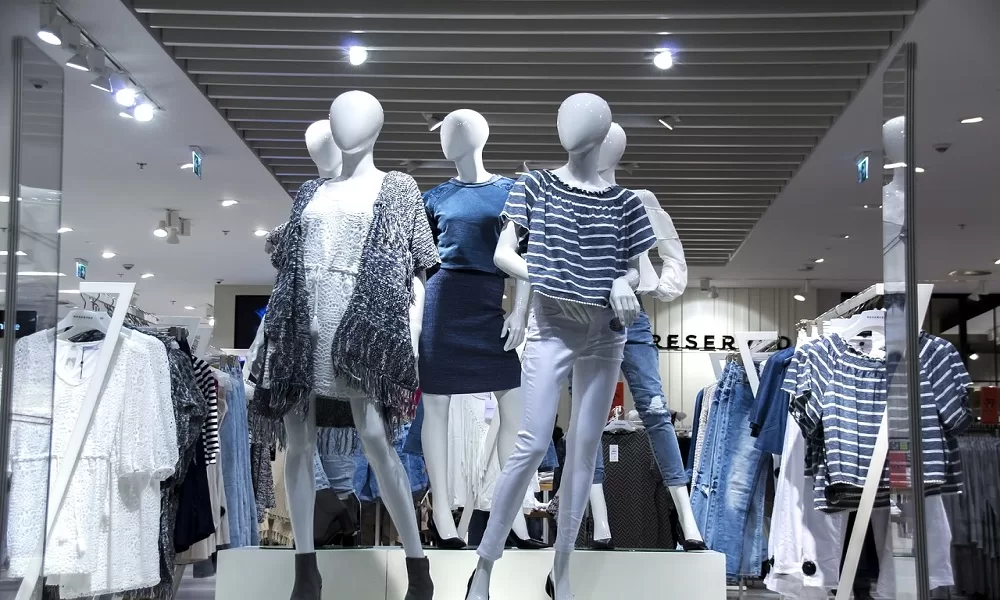Comprehending Garments: The Importance of Material Selections in Your Wardrobe
The option of material in apparel plays a pivotal role in both aesthetic appeals and functionality. Various products offer differing levels of breathability, durability, and comfort, directly affecting the user's experience. Understanding these nuances can improve one's closet considerably. Yet, lots of overlook just how these selections can influence not simply personal style, however also sustainability. What fabric decisions could redefine your closet and straighten it with both style and responsibility?
The Function of Material in vogue and Performance

Common Fabric Types and Their Qualities
When picking clothes, understanding the qualities of typical textile kinds is important for making informed options. Cotton, a widely-used all-natural fiber, is recognized for its flexibility, breathability, and softness, making it appropriate for laid-back wear and daily garments. Linen, one more all-natural choice, flaunts outstanding moisture-wicking buildings and a distinctive appearance, perfect for cozy climates.Wool, often preferred for its heat and durability, varies in fineness; merino wool is soft versus the skin, while coarser kinds are utilized for outerwear. Artificial fabrics like polyester and nylon offer resilience and resistance to creases, making them prominent for activewear and travel garments. Blends, which combine all-natural and artificial fibers, can enhance capability while preserving convenience. By recognizing these textile attributes, individuals can select apparel that straightens with their way of life and visual preferences.
Breathability and Convenience: Choosing the Right Fabrics for Various Climates
Picking the appropriate fabrics for numerous climates can substantially improve convenience and total wearability. Breathable materials are important in hot environments, as they enable air blood circulation and moisture evaporation. Fabrics such as cotton, linen, and moisture-wicking synthetics effectively attract sweat far from the body, keeping the wearer cool and completely dry. Alternatively, in colder climates, thicker materials like wool or fleece give insulation while keeping breathability, ensuring warmth without overheating.Additionally, the selection of material weight plays an important function; light-weight materials are better for summer, whereas heavier choices are matched for winter wear. Understanding the special buildings of each fabric makes it possible for individuals to dress suitably for varying climate problems. Eventually, selecting breathable and comfortable textiles customized to certain environments can considerably improve day-to-day comfort and enhance the general experience of wearing garments.
Toughness and Treatment: Just How Textile Affects Longevity of Your Wardrobe
Selecting the appropriate products can considerably affect the sturdiness and treatment demands of a wardrobe. Fabrics such as cotton and polyester are understood for their durability and ease of maintenance, making them excellent for day-to-day wear. In contrast, delicate products like silk and shoelace need more careful handling and specialized cleansing approaches, which can boost the time and initiative needed for care. Branded Clothing.Durability is additionally affected by the material's weave and surface; firmly woven materials have a tendency to stand up to wear and tear much better than freely woven choices. Additionally, synthetic blends frequently supply boosted durability, incorporating the most effective top qualities of several fibers.Understanding the treatment directions for each and every fabric is important, as improper drying out or washing can bring about premature wear. Inevitably, selecting durable materials can cause a longer-lasting wardrobe, decreasing the regularity of substitutes and contributing to a more lasting fashion option
The Impact of Fabric on Fit and Shape

Lasting Fabric Choices: Making Eco-Friendly Decisions
The influence of textile expands beyond fit and shape to incorporate environmental variables, prompting an expanding rate of interest in sustainable textile selections. Environmentally friendly fabrics, such as natural cotton, hemp, and Tencel, are getting grip amongst consumers that focus on sustainability in their wardrobes. These products are often created with less chemicals and water, reducing their eco-friendly footprint.Additionally, recycled fabrics, made from post-consumer waste, offer an ingenious solution to the fabric sector's air pollution problem. Brands progressively embrace openness in their sourcing techniques, enabling consumers to make educated choices regarding their purchases.Choosing lasting materials not just supports moral methods yet additionally encourages the garment industry to adopt even more accountable manufacturing techniques. As awareness of environmental concerns increases, individuals are advised to review the long-lasting impact of their material options, cultivating a movement towards important site a more sustainable and ecologically mindful method to style.
Elevating Design: Exactly How Textile Can Transform an Outfit
While lots of might concentrate on shade and cut when selecting an attire, the option of textile plays a crucial role in raising style and improving general appearance. Different products communicate unique moods and messages; for example, silk shows deluxe and refinement, while jeans provides a laid-back, relaxed vibe. The structure and drape of a fabric can drastically change the silhouette, with organized materials offering a polished look and softer ones creating an extra fluid, kicked back aesthetic.Moreover, the weight of Extra resources the textile affects wearability throughout periods. Light-weight materials like bed linen and cotton are perfect for summertime, while much heavier products such as woollen and velvet provide heat and elegance in cooler months. Recognizing material properties, such as breathability and stretch, likewise encourages individuals to make informed selections that enhance comfort without compromising design. Eventually, the ideal textile can change a clothing from regular to amazing, making it an essential consideration in any type of wardrobe.
Regularly Asked Concerns
Exactly how Do I Identify the Textile Material of My Garments?
To determine fabric content, one can examine treatment tags, conduct melt examinations for fiber identification, or consult fabric swatches. These methods assist distinguish products, guaranteeing notified choices for garments care and upkeep in day-to-day wear.
Can Textile Option Affect My Mood or Confidence?
Fabric choice can significantly influence an individual's state of mind and confidence. Branded Clothing. Particular materials might evoke sensations of convenience or sophistication, while others can really feel uncomplimentary or limiting, ultimately affecting self-perception and emotional health throughout the day
What Fabrics Are Finest for Sensitive Skin?
For individuals with delicate skin, natural materials like cotton, bed linen, and bamboo are frequently recommended. These products are breathable, hypoallergenic, and much less likely to create irritability, making them suitable options for convenience and skin health and wellness.
Just how Do I Effectively Wash and Care for Different Fabrics?
To properly clean and care for various materials, one need to consider each product's certain demands, consisting of temperature level setups, cleaning agents, and drying out methods, making sure longevity and preserving the textile's original high qualities for ideal use.
Are There Certain Fabrics for Athletic or Performance Wear?
Athletic or efficiency wear usually makes use of textiles such as spandex, nylon, and polyester. These products are developed for moisture-wicking, breathability, and versatility, improving motion and convenience during physical tasks while supplying resilience and support. On the other hand, in colder environments, thicker textiles like wool or fleece give insulation while keeping breathability, ensuring warmth without overheating.Additionally, the choice of fabric weight plays an essential duty; lightweight fabrics are better for summer, whereas heavier alternatives are fit for winter months wear. In comparison, delicate products like silk and lace require even more cautious handling and specialized cleaning approaches, which can boost the time and initiative needed for care.Durability is also affected by the material's weave and surface; tightly woven materials tend to stand up to wear and you can find out more tear better than freely woven alternatives. In comparison, rigid textiles can limit activity however offer a classic, refined look.Moreover, the density and structure of the textile can affect the visual perception of body form. The influence of material extends beyond fit and silhouette to include ecological variables, motivating an expanding interest in sustainable fabric selections. The texture and drape of a textile can significantly modify the shape, with organized materials giving a polished appearance and softer ones creating a much more fluid, unwinded aesthetic.Moreover, the weight of the fabric affects wearability throughout seasons.